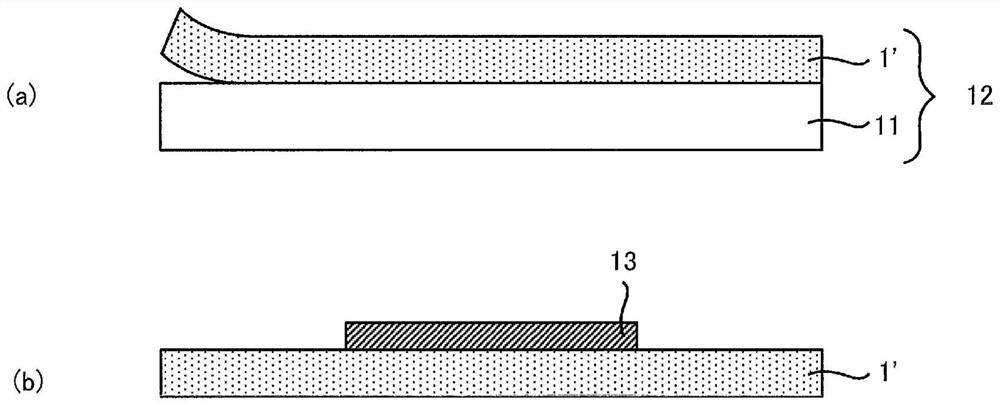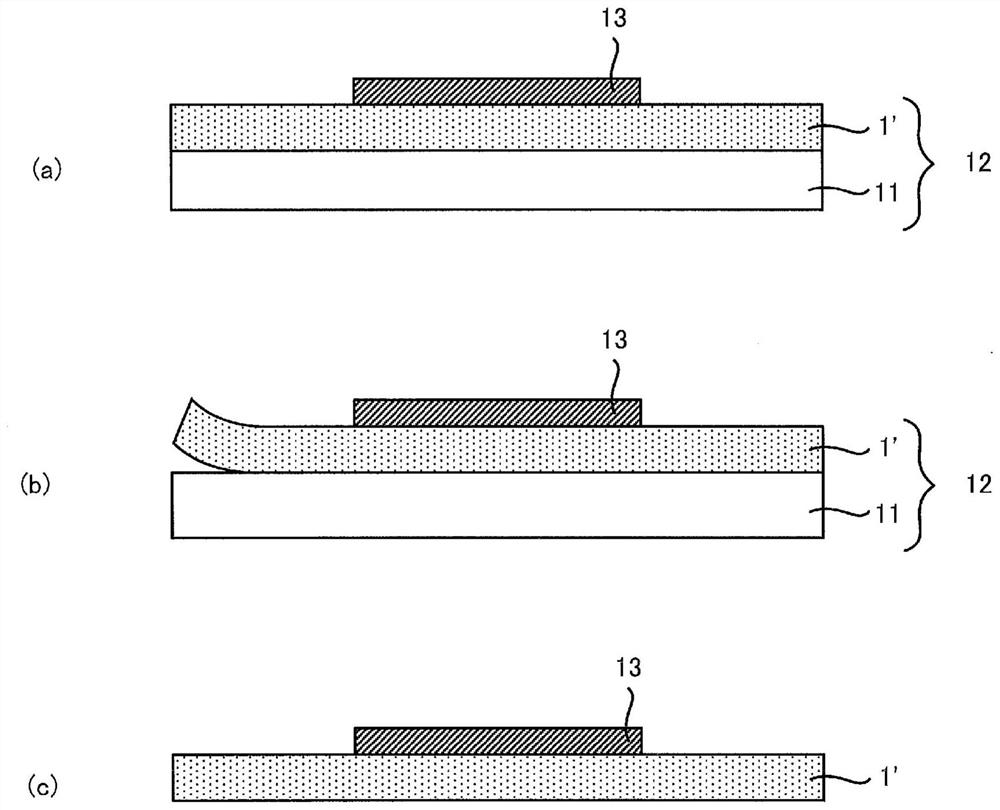Polyamic acid, varnish containing same, film, touch panel display, liquid crystal display, and organic el display
A technology of polyamic acid and tetracarboxylic dianhydride, applied in the direction of coating, etc., can solve the problems of flexibility, low impact resistance, high specific gravity of inorganic glass, etc., and achieve high heat resistance, less coloring, and elongation large effect
- Summary
- Abstract
- Description
- Claims
- Application Information
AI Technical Summary
Problems solved by technology
Method used
Image
Examples
preparation example Construction
[0155] (Preparation of polyamic acid or block polyamic acid imide)
[0156] When the polyimide to be produced is a random polymer, the above-mentioned tetracarboxylic dianhydride component and diamine component are mixed and polymerized to obtain a polyamic acid. Here, the ratio (y / x) of the total molar weight y of the tetracarboxylic dianhydride component to the total molar weight x of the diamine component during the preparation of the polyamic acid is preferably 0.9 to 1.1, more preferably 0.95 to 1.05, and further It is preferably 0.97 to 1.03, particularly preferably 0.99 to 1.01.
[0157] The polymerization method of a diamine component and a tetracarboxylic dianhydride component is not specifically limited, A well-known method can be used. For example, a container equipped with a stirrer and a nitrogen introduction pipe is prepared, and a solvent is put into the nitrogen-substituted container. And the diamine component was added so that the solid content density|conce...
Embodiment
[0194] Hereinafter, the present invention will be described in more detail by way of examples. However, the scope of the present invention is not limited thereto.
[0195] 1. Tetracarboxylic dianhydride and diamine components
[0196] The abbreviations of the tetracarboxylic dianhydride and the diamine component used in the Example and the comparative example are as follows, respectively.
[0197] [Tetracarboxylic dianhydride component]
[0198] s-BPDA: 3,3',4,4'-Biphenyltetracarboxylic dianhydride
[0199] a-BPDA: 2,3,3',4'-Biphenyltetracarboxylic dianhydride
[0200] BPAF: Fluorenylene bisphthalic anhydride
[0201] [Diamine component]
[0202] t-DACH: trans-diaminocyclohexane (trans-1,4-diaminocyclohexane)
[0203] 1,4-BAC: 1,4-Diaminomethylcyclohexane
[0204] BAFL: 9,9-bis(4-aminophenyl)fluorene
[0205] 1,5-DAN: 1,5-Diaminonaphthalene
[0206] 4,4'-DAS: 4,4'-Diaminodiphenylsulfone
Synthetic example 1
[0208] Add t-DACH: 7.19 g (0.063 mol), 1,4-BAC: 1.00 g (0.007 mol) and N-methyl-2-pyrrolidone to a flask equipped with a thermometer, a condenser, a nitrogen inlet tube, and a stirring blade (NMP) 179.4 g (corresponding to 15% by mass) was stirred in a nitrogen atmosphere to obtain a uniform solution. s-BPDA: 11.33 g (0.039 mol), a-BPDA: 4.12 g (0.014 mol), and BPAF: 8.02 g (0.017 mol) were charged into this solution in the form of powder. Salt formation. The temperature of the solution was increased, and the reaction was carried out at an internal temperature of 80° C. to 85° C. for 1 hour. As a result, a uniform solution was obtained. Thereafter, it was cooled to room temperature and aged overnight at room temperature to obtain a pale yellow viscous varnish. The intrinsic logarithmic viscosity of the obtained polyamic acid varnish: ηinh (measured by Ubbelohde's viscosity tube at a polymer concentration of 0.5g / dL, NMP, and 25°C) is 1.17dL / g, and the value obtained by an E-...
PUM
| Property | Measurement | Unit |
|---|---|---|
| glass transition temperature | aaaaa | aaaaa |
| thickness | aaaaa | aaaaa |
| thickness | aaaaa | aaaaa |
Abstract
Description
Claims
Application Information
 Login to View More
Login to View More - R&D
- Intellectual Property
- Life Sciences
- Materials
- Tech Scout
- Unparalleled Data Quality
- Higher Quality Content
- 60% Fewer Hallucinations
Browse by: Latest US Patents, China's latest patents, Technical Efficacy Thesaurus, Application Domain, Technology Topic, Popular Technical Reports.
© 2025 PatSnap. All rights reserved.Legal|Privacy policy|Modern Slavery Act Transparency Statement|Sitemap|About US| Contact US: help@patsnap.com



